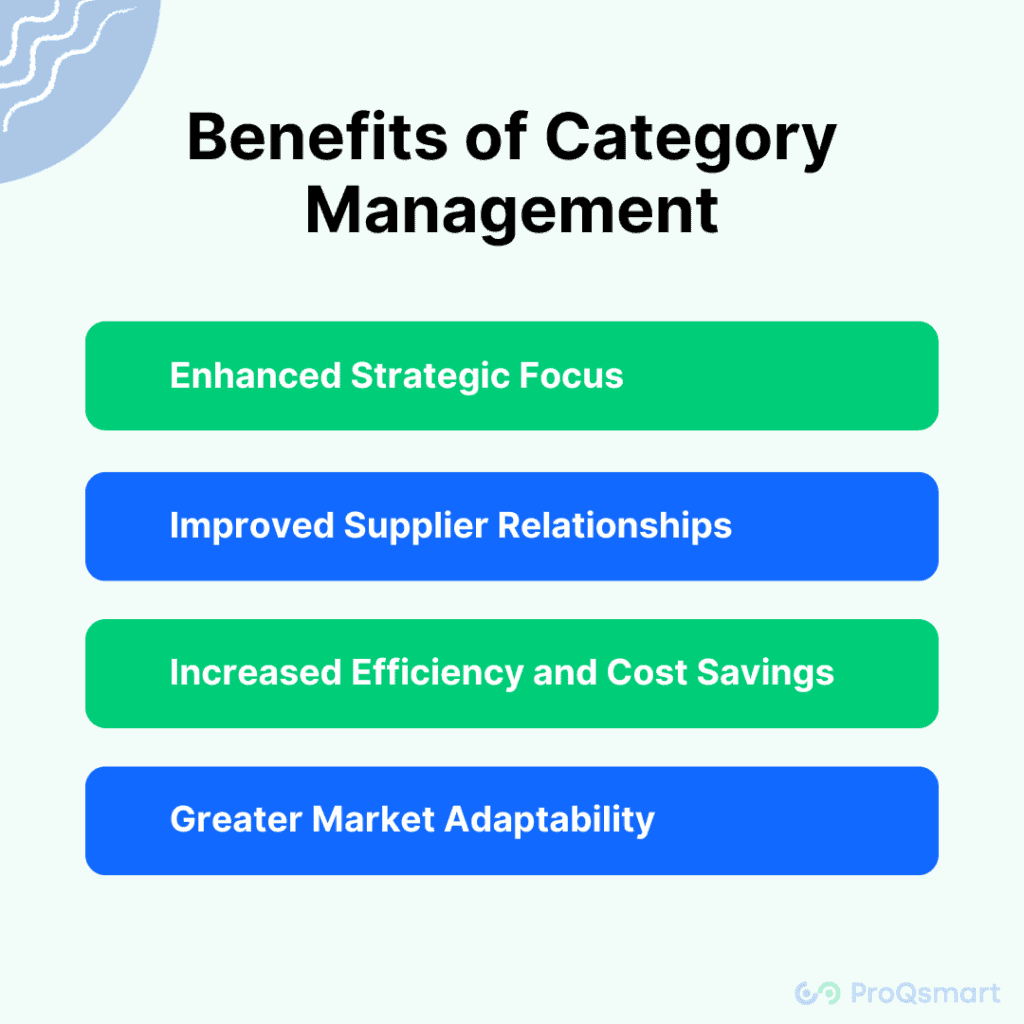In the intricate world of procurement, category management stands out as a strategic approach that allows Chief Procurement Officers (CPOs) to add remarkable value to their organizations. This comprehensive guide explores the essence of category management, its benefits, and practical steps on how CPOs can effectively implement this approach to enhance efficiency and drive substantial business outcomes.
What is Category Management?
Category management is a strategic procurement approach that involves organizing related goods and services into discrete groups to optimize value and meet business objectives more effectively. It allows procurement teams to focus on specific areas of spend and tailor their strategies to market changes, supplier capabilities, and internal business needs.
The Role of CPOs in Category Management
Chief Procurement Officers play a crucial role in category management by setting the vision and steering the procurement function towards more sophisticated, value-driven approaches. They ensure that category management aligns with the organization’s overall strategic goals, driving not only savings but also fostering innovation and supplier development.
Benefits of Category Management

Enhanced Strategic Focus
Category management allows organizations to allocate resources more strategically, concentrating expertise and effort on specific areas that are crucial for business success.
Improved Supplier Relationships
By focusing on specific categories, CPOs can develop deeper relationships with key suppliers, leading to better collaboration, innovation, and long-term partnerships.
Increased Efficiency and Cost Savings
A dedicated category approach helps identify efficiencies and leverage scale, reducing costs and improving service levels across the supply chain.
Greater Market Adaptability
Category management enables organizations to respond more swiftly to market changes by aligning procurement strategies with real-time market and supplier data.
Implementing Category Management: A Step-by-Step Guide
Step 1: Define Categories
Start by defining categories that are meaningful to your business. Categories should be based on a combination of spend analysis, business needs, and market dynamics. Common examples include IT, marketing, professional services, and facilities management.
Step 2: Appoint Category Managers
Assign dedicated managers with expertise in specific categories. These managers are responsible for developing category strategies, overseeing supplier performance, and ensuring that the category’s procurement strategy aligns with the organization’s objectives.
Step 3: Develop Category Strategies
Each category requires a tailored strategy that considers market conditions, supplier landscape, and internal stakeholder needs. Strategies should focus on optimizing costs, improving quality, and innovating processes.
Step 4: Collaborate with Stakeholders
Effective category management involves collaboration across various functions. Engage stakeholders early in the strategy development process to understand their needs and gain their buy-in.
Step 5: Implement the Strategy
Execute the procurement strategy for each category, employing best practices in supplier selection, contract management, and performance monitoring.
Step 6: Monitor and Improve
Continuously monitor performance against key metrics specific to each category. Use insights from data and stakeholder feedback to refine strategies and make informed decisions.
Conclusion
Category management is a powerful tool in the arsenal of any Chief Procurement Officer aiming to drive value in procurement functions. By focusing on specific categories, CPOs can enhance their organization’s procurement efficiency, adapt more quickly to changing market conditions, and build stronger, more strategic supplier relationships. As businesses continue to evolve, the importance of a well-executed category management strategy becomes ever more critical, positioning procurement as a key driver of organizational success.


